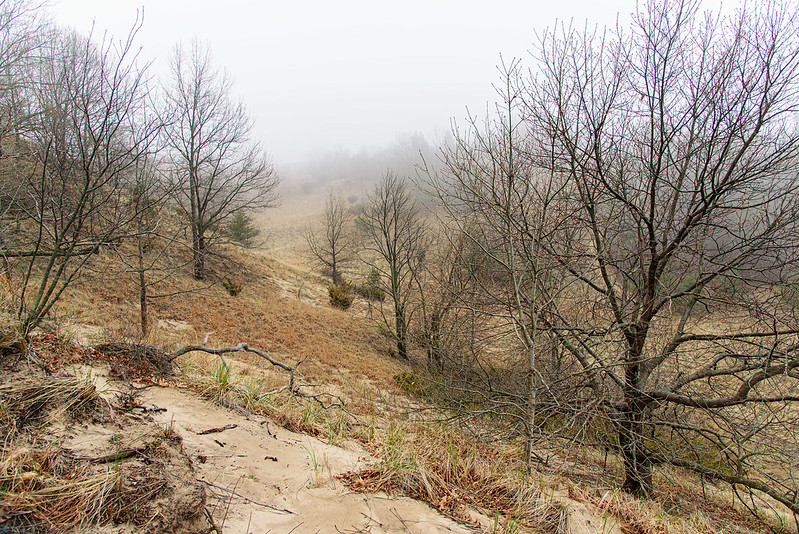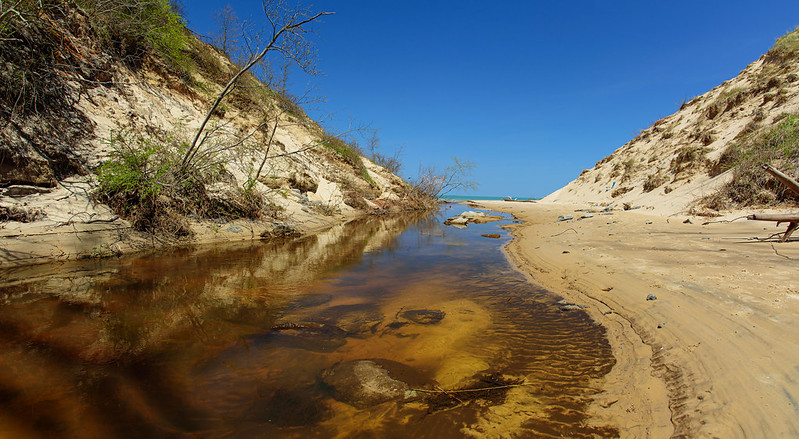
I don't happen to visit the Indiana Dunes too often when it's foggy, but when I do, it's a completely different atmosphere. On some occasions, it was so foggy, it was difficult to navigate the dunes - obviously easy to follow the trails, but not so easy to figure out where you were, and which trail you need to take. This is also when you can only hear Lake Michigan, you can't see anything over the edge of the dune, it's almost as though you are thousands of feet above the earth.

On this morning, the fog wasn't so dense, but it did add a bit of ambience (some spell it ambiance) to the hike. Knowing the area quite well, I was interested in reaching certain points in the hike, just to see how different things looked in the morning fog. The only thing I was hoping for was the sun breaking through the fog, but that was not to be. Nothing beats seeing the fog burning off slowly with the increasing sunlight.

A slightly rough Lake Michigan can be seen in the distance, churned up by the high winds of the previous day. It's quite interesting to me how Lake Michigan can be a monster with 15 foot waves one day, then a day or two later, it's calm as glass. The calm waters generally happen when there is a slight breeze blowing from the shore toward the water - on those days, I'm sure it's wavy across the lake in Wisconsin.








